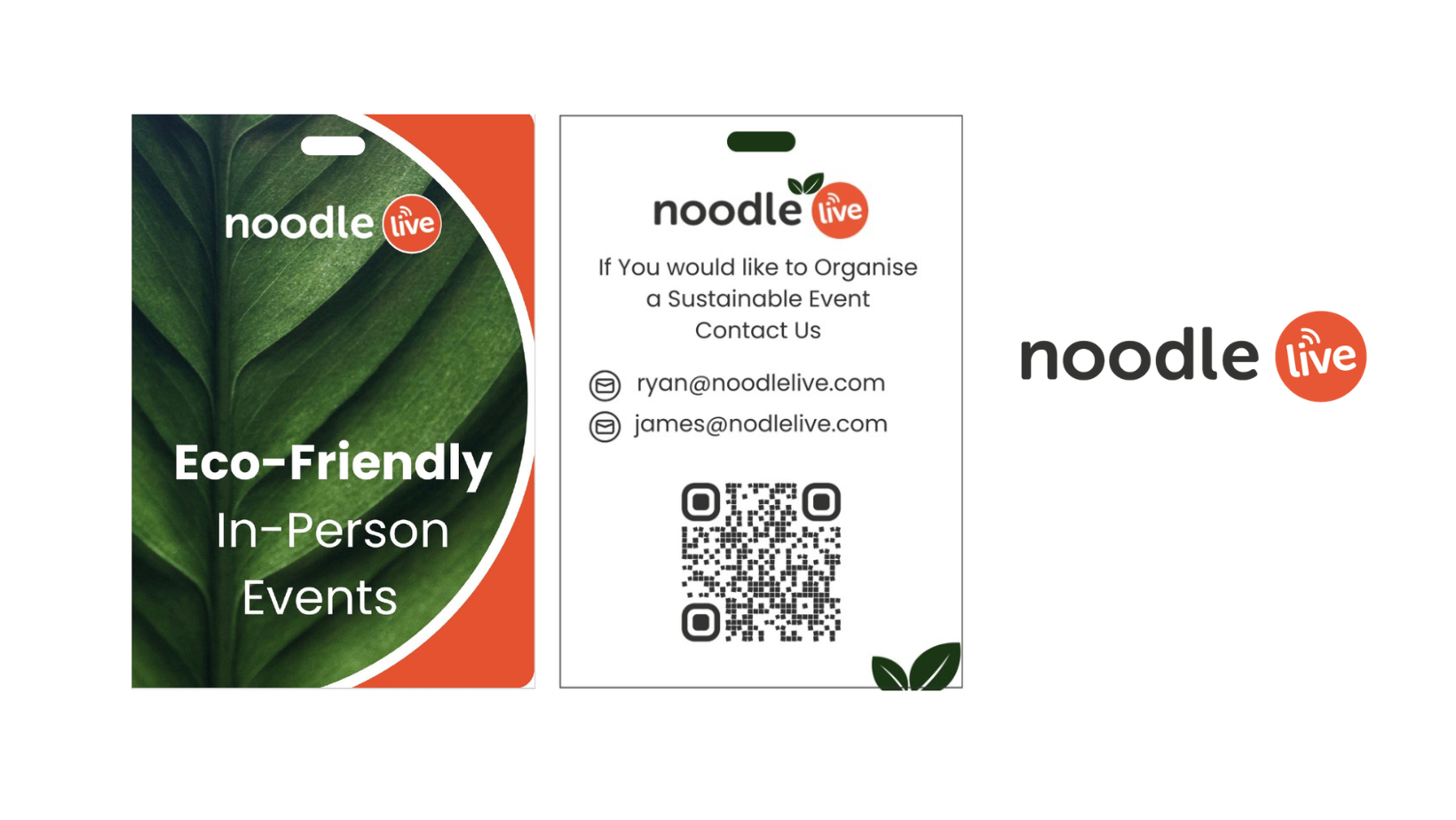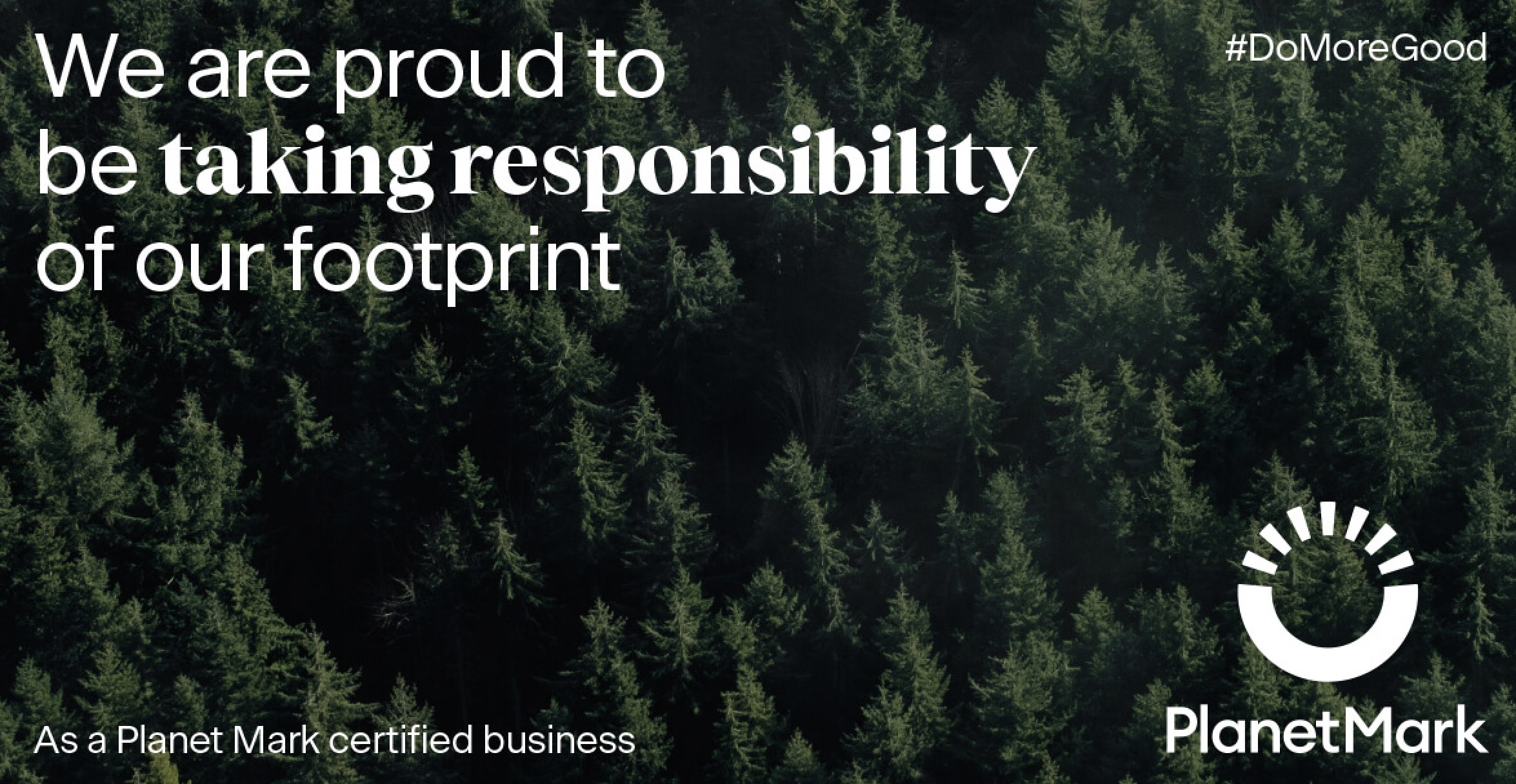Worried about waste? Us too. That’s why we’ve been finding moments in between making RFID name badges and apps for events to work on reducing our impact, lowering our non-recyclable plastic use and offsetting our travel.
If, like us, you’re trying to cut down on waste at your live events and reduce your carbon footprint, take a look at our quick guide to the most common areas of waste to watch out for. Just to be clear – we’re not environmental experts, and we’re not claiming to be. We’ve just been doing some research and we thought we’d share our findings. So, here are some of the areas to be aware of if you want to reduce your waste creation!
Plastic cutlery
The problem:
Plastic cutlery is a huge convenience product for the events industry thanks to its mass production and the quick and easy disposal that doesn’t require large-scale dishwashing facilities. But it’s a real headache for the environment.
In the US, it’s estimated that around 40 billion pieces of plastic cutlery are thrown out every year without ever having been used. Even worse, the Ocean Conservancy lists cutlery as among the ‘most deadly’ items for sea creatures and birds.
Solutions:
It’s pretty simple – put a blanket ban on any plastic cutlery.
This one simple switch will have a huge impact on reducing your plastic waste. If you have access to washing up facilities, you can obviously consider offering metal, re-usable cutlery, but if not, there are also plenty of alternatives on offer. Compostable cutlery is a good place to start and is available in wood or starch.
Straws
The problem:
Plastic straws have undergone somewhat of a PR disaster in the last couple of years, and rightly so! They’re light and flimsy so can easily get blown away from landfill sites or waste disposal ships and end up in the ocean, where they’re exactly the right shape to be mistaken for food by fish and turtles. It’s estimated that around 8.3billion plastic straws are currently littering the world’s beaches.
Solutions:
Thankfully, the industry has responded quickly and there are now loads of great alternatives, including paper and even pasta straws. Even better still, ditch the straws altogether and let people sip their drinks. Simple!
For something a bit quirky, you could also try straws made from bamboo shoots to straws made from straw itself. Not that is a talking point!
Water bottles
The problem:
One of the most wasteful uses of single-use plastic and one of the easiest to resolve. 38 million plastic bottles go to landfill every year, which takes 24,000 litres of oil to produce. Globally, humans buy one million plastic bottles every minute, and 91% of them end up in landfill. Yikes.
Solutions:
Encourage delegates to bring their own water containers and make sure you install plenty of refill stations around your event. For those who forget to provide their own containers, you can sell reusable water bottles, or offer glasses and mugs that can be washed up.
Coffee Cups
The problem:
Think your morning coffee cup is harmless if you chuck it into the recycling? Sadly, coffee cups are very hard to recycle thanks to the plastic coating that’s put on the inside to protect the cardboard and prevent leaks. Every year, we throw out around 100 billion disposable coffee cups, and because they’re so hard to recycle, more than 99% of them end up in landfill.
Solutions:
Opt for washable ceramic mugs or offer heavy discounts on tea and coffee for delegates who bring their own reusable cup.
Paper Waste
The problem:
With all the concern over plastic, paper waste has almost taken a backseat, but how many times have you left an event with bags full of paper leaflets and business cards? That’s a lot of wasted paper.
Solutions:
Well, uh. This is embarrassing – the solution to this one might just be…umm. Us! Or any event app developer or RFID name badge supplier for that matter. With good event tech, you can create easily distributable digital copies of floorplans, schedules and even brochures and coat-room tickets. It’s not zero-waste, but good event tech can help you cut down on your paper consumption drastically.
Food
The problem:
Do you know how far the food you’re supplying has travelled in order to get to your event? Food miles are a huge contributor to environmental pollution and the use of fossil fuels.
Solutions:
Look at using locally produced food from sustainable sources. If you’re really wanting to give your green credentials a boost, take a look at meat-free catering or low meat options too. Cutting down on meat is a quick fix when it comes to reducing your environmental impact. It’s also a good idea to look into services that can make use of any food waste or excess. Rock and Wrap it Up and Fareshare South West both collect unused food at the end of an event and distribute it to those in need.
Signage and Stands
The problem:
You want your event to look beautiful, so you need to create signage and displays that are bright and beautiful to help people find their way around and to mark different areas of the event. But all of that plastic can really add up.
Solutions:
Hello Ecobooth! They repurpose ocean plastic to create signage and display booths that are made out of repurposed waste materials – and they look beautiful too. Other alternatives include creating re-usable display furniture packs that exhibitors can rent and that get used again and again.
Travel
The problem:
Pay attention to the way your delegates will travel to the event. All of those transport miles add up to a heavy carbon footprint for your event, and if it’s international, the problem is exacerbated by air travel.
Solutions:
Provide suitable shared transport options. Ideally, choose a venue with plenty of public transport that brings people directly to the doorstep. If your venue can’t be close to public transport facilities, look at providing group coaches. On the event registration form, you could ask people how they plan to travel and contact those who are planning on driving to let them know about other options. You could also offer an incentive, like queue jump, for those who use public transport.
Nobody’s perfect, and we’ll all create some kind of footprint through our live events, but at Noodle HQ, we’ve loved taking active steps to look at cutting down our environmental impact and reducing our waste output – almost as much as we enjoy making RFID name badges and apps for events.


